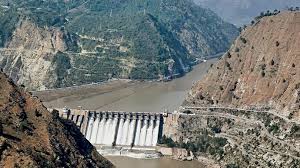BEIJING: China has approved the construction of the world’s largest dam, stated to be the planet’s biggest infra project costing $137 billion, on the Brahmaputra in Tibet close to the Indian border, raising concerns in riparian states India and Bangladesh.
The Chinese government has approved the construction of a hydropower project in the lower reaches of the Yarlung Zangbo (Yarlung Tsangpo) river, the Tibetan name for the Brahmaputra, according to an official statement quoted by state-run Xinhua news agency on Wednesday.
The dam is to be built at a huge gorge in the Himalayan reaches where the Brahmaputra makes a huge U-turn to flow into Arunachal Pradesh and then to Bangladesh.
The total investment in the dam could exceed one trillion yuan ($137 billion), which would dwarf any other single infrastructure project on the planet, including China’s own Three Gorges Dam, regarded as the largest in the world, the Hong Kong-based South China Morning Post reported on Thursday. Concerns arose in India as the dam besides empowering China to control the water flow, the size and scale of it could also enable Beijing to release large amounts of water flooding border areas in times of hostilities.
India too is building a dam over the Brahmaputra in Arunachal Pradesh. India and China established the expert-level mechanism in 2006 to discuss various issues related to trans-border rivers under which China provides India with hydrological information on the Brahmaputra and Sutlej during the flood seasons.
The Brahmaputra dam presents enormous engineering challenges as the project site is located along a tectonic plate boundary where earthquakes occur. The Tibetan plateau, regarded as the roof of the world, frequently experiences earthquakes as it is located over the tectonic plates.
The official statement on Wednesday sought to allay concerns about earthquakes, saying that the hydropower project was safe and prioritises ecological protection. Through extensive geological explorations and technical advancements, a solid foundation had been laid for the science-based development, it said.


